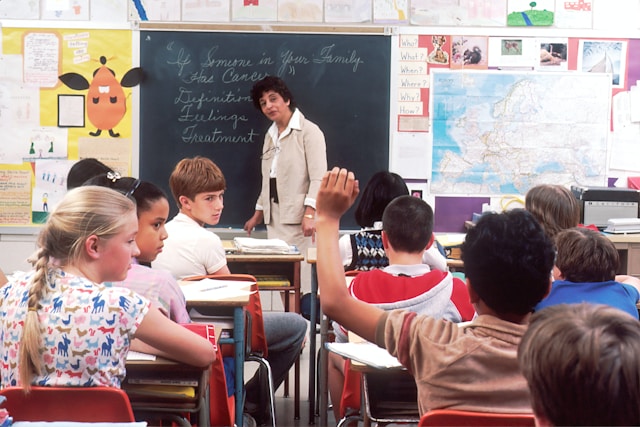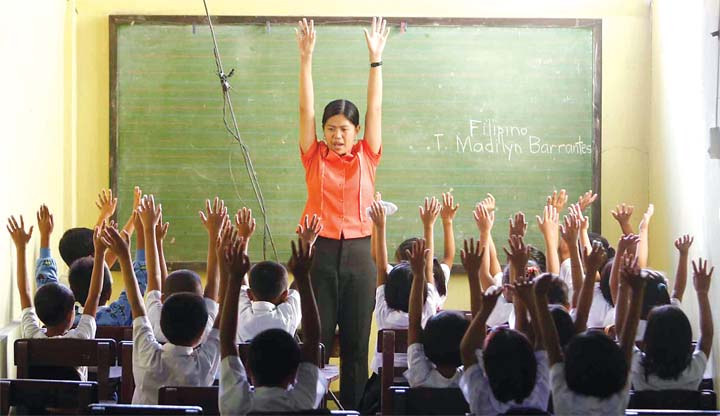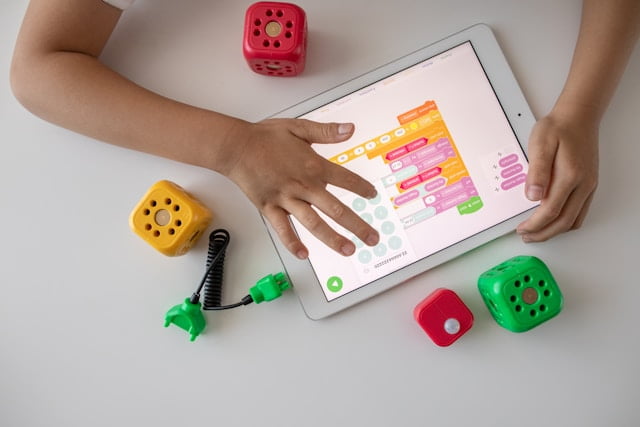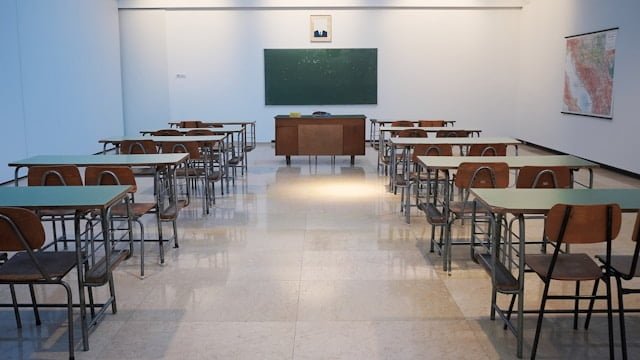Prof Ed Reviewer, Part 3
Question 1. How might Teacher Rey demonstrate plants’ reactions to sunlight using an inductive teaching approach?
A. Present a variety of plants to observe their respective sunlight responses.✅
B. Discuss the relationship between sunlight exposure and its effects on plants.
C. Describe how plants generally respond to sunlight.
D. Detail the chemical processes in plants triggered by sunlight.
Question 2. Which newspaper sections could Teacher D use to enhance the critical reading abilities of his Grade 6 class?
A. Editorials and opinion pieces for analyzing perspectives and argumentative structures.✅
B. News articles for distinguishing facts from opinions and identifying bias.
C. Feature stories for understanding narrative techniques and underlying themes.
D. Letters to the editor for evaluating reader responses and forming counterarguments.
Question 3. In which academic subject is the demonstration method considered to be the most effective and practical teaching approach?
A. Technical-vocational✅
B. Social Studies
C. General education
D. Values education
Question 4. Which of the following applications is based on B.F. Skinner’s Operant Conditioning Theory?
A. Computer-Assisted Instruction✅
B. The Project Method
C. The Mastery Learning Approach
D. The Process Flow Technique
Question 5. The main purpose of using varying heights in a Histogram to represent statistical data is to:
A. Illustrate data flow
B. Show frequency distribution✅
C. Demonstrate quantitative value
D. Represent figures symbolically
Question 6. Which of the following activities is NOT a component of effective direct instruction?
A. Extensive review and clarification.
B. Posing questions and ensuring comprehension.
C. Moving rapidly in complex, compound steps.✅
D. Offering structured feedback and making corrections.
Question 7. Which factor contributes to the adaptability and flexibility of learning frameworks, allowing them to evolve with contemporary trends and methodologies?
A. Being receptive to innovative concepts.✅
B. Establishing rigid standards and guidelines.
C. Adhering to a constant perspective.
D. Compliance with authoritative directives.
Question 8. What error is made by a teacher who moves from one activity to another without clear objectives and a structured sequence?
A. Thrusting
B. Truncating
C. Dangling
D. Flip-flopping✅
Question 9. Teacher Maria included various learning activities in her lesson plan but omitted ____, as it is a routine part of daily lessons.
A. Presentation✅
B. Summative Exam
C. Project
D. Buzz Session
Question 10. Arrange the steps in strategic instructional planning in chronological order.
I. Check materials
II. Decide expected outcomes
III. Establish content
IV. Outline presentation lesson
V. Implement instruction
A. III, IV, II, I and V
B. II, III, IV, I and V✅
C. IV, I, II, III and V
D. II, I, III, IV and V
Question 11. How is the spiral approach to teaching Mathematics implemented in the K to 12 Curriculum?
A. Focusing on Algebra, Geometry, and Trigonometry exclusively in upper grades.
B. Systematically developing Math concepts from Grade 1 through Grade 10.✅
C. Offering Algebra, Geometry, and Trigonometry in Grades 7, 8, and 10 respectively.
D. Allowing schools to select their Math curriculum independently.
Question 12. The concept of “learning to learn” is most effectively demonstrated through which skill(s)?
A. Asking questions and collecting data
B. Analyzing and filtering information
C. Listening actively and observing keenly✅
D. Reading comprehensively
Question 13. In the scenario where a powerful European country provides weapons to Afghan rebels engaged in a conflict in the Middle East, the principle most applicable based on moral discernment would be:
A. Principle of double effect
B. Principle of material cooperation
C. Principle of lesser evil
D. Principle of formal cooperation✅
Question 14. The enhancement of sound judgment, dedication to truth, and fortification of societal moral values align with this principal aim of Philippine education:
A. Self-actualization
B. Ethical character✅
C. Autonomy
D. Enculturation
Question 15. To effectively “learn to live and work together,” a learner must initially cultivate:
A. Inner tranquility
B. Compassion for others✅
C. A selfless perspective
D. Self-fulfillment
Question 16. The skill most indicative of the “learning to learn” concept is:
A. to ask and gather data
B. to process and select the information
C. to listen and observe
D. reading with comprehension✅
Question 17. If a teacher aims for their students to cultivate self-responsibility and accountability, the educational philosophy to emphasize would be:
A. Utilitarianist
B. Existentialist✅
C. Essentialist
D. Constructivist
Question 18. Among the options for community engagement by school officials and teachers, the one that might be considered inappropriate due to prevailing religious sentiments is:
A. Literacy assistance for out-of-school children/youths.
B. Household campaign for healthful practice.
C. Introducing cooperative thrift practices.
D. Promoting contraceptives for planned parenthood.✅
Question 19. Given the context of addressing corruption as highlighted by Transparency International, the most relevant educational program would be:
A. Values Education✅
B. Cultural Preservation Program
C. Socio-Economic Development
D. Infrastructure Modernization
Question 20. A learning episode characterized by complete, clear, and well-organized documentation is best represented by:
A. Assignments submitted before the deadline
B. Portfolio✅
C. Analysis of learning episodes
D. Reflections/insight
Question 21. Teacher Rina’s approach of using real-world Math problems for practice drills is grounded in the principle that:
A. Effective learning begins with setting expectations and learning outcomes.
B. Learning is the discovery of the personal meaning of ideas.✅
C. Learning is an active process.
D. Learning is a cooperative and collaborative process.
Question 22. Aligning with the principle of connecting lessons to students’ lives by incorporating relevant values, the most suitable approach is:
A. Communicating the lesson objectives/outcomes to students, ensuring they understand how these objectives relate to their own experiences and values.✅
B. Write SMART lesson objective.
C. Lesson objectives/outcomes integrated with 2 or 3 domains-cognitive, skill, and effective learning.
D. Begin with the goal/objective in mind.
Question 23. When Teacher Ian encourages students to deconstruct, critically assess, interpret, and explore a concept or issue, this exemplifies:
A. Synthesis
B. Application
C. Evaluation
D. Analysis✅
Question 24. The type of knowledge gained through computer literacy and understanding the most suitable technology for teaching purposes is referred to as:
A. Method knowledge
B. Pedagogical knowledge
C. Technological knowledge✅
D. Content knowledge
Question 25. Among the listed requirements for aligning the curriculum with learning outcomes, the one that is NOT a major necessity is:
A. clear establishment of learning outcomes
B. teaching-learning activities based on content
C. procurement of cost-effective resources✅
D. assessment to determine the realization of outcomes
Question 26. By encouraging her students to connect new lessons to their own experiences and share these insights, Teacher Jhera is embodying which learning principle?
A. Learning is an active process
B. Effective learning begins with setting clear expectations and learning outcomes
C. Learning is a cooperative and collaborative process
D. Learning is the discovery of the personal meaning of ideas✅
Question 27. Human development domains ____.
A. integrate holistically✅
B. are separate and unconnected
C. function independently
D. have no effect on each other
Question 28. Which stage sees the fastest changes in human development?
A. Early childhood
B. Prenatal period
C. Middle childhood
D. Infancy✅
Question 29. In which development stage do children establish their initial close relationships?
A. Early childhood
B. Adolescence
C. Infancy✅
D. Middle childhood
Question 30. At 7 months old, which motor skill is Bert likely to demonstrate?
A. Eating with assistance
B. Walking with assistance
C. Standing while holding onto furniture✅
D. Sitting independently, using a hand for support
Question 31. The concept of ____ is characteristic of ____ theories.
A. nurture; continuous
B. change; heredity
C. context; nature
D. stage; discontinuous✅
Question 32. Marcus experienced abuse during his preschool years. He’s now in elementary school and residing with a foster family. The school counselor is optimistic that his current positive environment can mitigate those adverse experiences. This perspective highlights the significance of ____.
A. heredity
B. nature
C. stability
D. nurture✅
Question 33. According to Freud, the______ works to reconcile the demands of the______ and the______.
A. id; conscious; subconscious
B. ego; id; superego✅
C. superego; id; ego
D. id; ego; superego
Question 34. In the oral stage of psychosexual development, if oral needs are not adequately met, an individual might develop habits like ____.
A. hostility towards the same-sex parent
B. extreme messiness and disorder
C. sexual promiscuity
D. fingernail biting and overeating✅
Question 35. According to Piaget’s theory of cognitive development,
A. development must be understood in relation to each child’s culture
B. children gradually develop adaptive behaviors
C. rapid development happens during a sensitive period
D. children actively construct knowledge through interaction and exploration of their environment✅
Question 36. Children’s reasoning becomes more logical and organized during the ages of:
A. 7–11✅
B. 2–5
C. 5–7
D. 4–6
Question 37. In contrast to Freud, Erikson:
A. emphasized the influence of early experiences on later behavior
B. downplayed the significance of culture in individual development
C. saw children as playing a more active part in their development
D. acknowledged that development occurs throughout the lifespan✅
Question 38. Children explore the possibilities of who they might become during Erikson’s __ stage.
A. industry versus inferiority
B. initiative versus guilt
C. autonomy versus shame and doubt
D. identity versus role confusion✅
Question 39. According to Kohlberg’s Theory of Moral Development, social activists who advocate for human rights and welfare beyond the scope of existing laws typically operate from the perspective of:
A. Social contract✅
B. Law and order
C. Mutual benefit
D. Punishment
Question 40. According to Kohlberg’s Theory of Moral Development, Anton, who lets his classmates copy his test work to gain their friendship, is likely motivated by a desire for:
A. Social approval✅
B. Law and order
C. Mutual benefit
D. Punishment
Question 41. Which behavior reflects Vygotsky’s sociocultural theory?
A. Tom behaves in the store to get a lollipop.
B. Michelle tests different solutions on her Math homework.
C. Amy replicates a castle she saw her friend make in her sandbox.
D. Ryan uses his dad’s advice while building a block tower.✅
Question 42. To adhere to the standards of the Total Quality School Model, a school can benefit significantly from:
A. Clientele-focus
B. Empowerment
C. Continuous improvement✅
D. Involvement of the community
Question 43. Vygotsky viewed cognitive development as:
A. children’s capacity to shape their development
B. emphasizing the bidirectional nature of the child-environment relationship
C. focusing on discontinuous change
D. a socially mediated process in which children depend on assistance with new challenges✅
Question 44. Bronfenbrenner stressed that at the environment’s core:
A. Regular reciprocal interactions significantly shape development.✅
B. Environmental effects are consistent across children.
C. Children learn cultural values through adult interactions.
D. The key influences are reinforcement, punishment, and modeling.
Question 45. The public policies affecting a child’s education are part of the:
A. Macrosystem✅
B. Microsystem
C. Mesosystem
D. Chronosystem
Question 46. When special needs children are integrated from special education classrooms into “regular” classrooms with typical learners, they are experiencing:
A. field study
B. general education class
C. mainstreaming✅
D. pull-out program
Question 47. According to Howard Gardner’s Multiple Intelligences Theory, individuals with a dominant spatial intelligence would likely find beauty in:
A. computer encoding
B. landscape gardening✅
C. case study writing
D. news reporting
Question 48. A person dominant in left-brain functions is analytical and logical. A right-brain dominant person is:
A. Detail-oriented, then generalizes
B. Verbal, quick, and sequential
C. Broad, intuitive, and emotional✅
D. Focused on details and patterns
Question 49. Which statement accurately reflects Operant Conditioning Theory?
A. Positive behavior can persist with fewer familiar associations over time.
B. A neutral stimulus can trigger a response when linked with a reflex-producing stimulus.
C. A reflexive response can be elicited by a neutral stimulus when combined with a familiar one.
D. Behavior frequency can rise when diverse reinforcers follow it.✅
Question 50. According to social learning theory, as children age:
A. They become choosier in their imitation.✅
B. Their actions are less driven by basic needs like hunger.
C. Parental reinforcement becomes more influential than peer reinforcement.
D. Operant conditioning becomes more influential than classical conditioning in shaping behavior.



